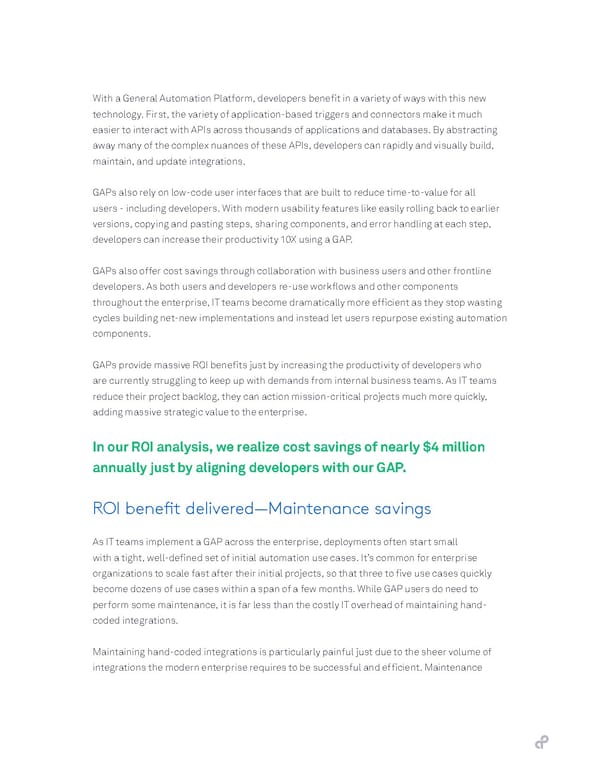With a General Automation Platform, developers benefit in a variety of ways with this new technology. First, the variety of application-based triggers and connectors make it much easier to interact with APIs across thousands of applications and databases. By abstracting away many of the complex nuances of these APIs, developers can rapidly and visually build, maintain, and update integrations. GAPs also rely on low-code user interfaces that are built to reduce time-to-value for all users - including developers. With modern usability features like easily rolling back to earlier versions, copying and pasting steps, sharing components, and error handling at each step, developers can increase their productivity 10X using a GAP. GAPs also offer cost savings through collaboration with business users and other frontline developers. As both users and developers re-use workflows and other components throughout the enterprise, IT teams become dramatically more efficient as they stop wasting cycles building net-new implementations and instead let users repurpose existing automation components. GAPs provide massive ROI benefits just by increasing the productivity of developers who are currently struggling to keep up with demands from internal business teams. As IT teams reduce their project backlog, they can action mission-critical projects much more quickly, adding massive strategic value to the enterprise. In our ROI analysis, we realize cost savings of nearly $4 million annually just by aligning developers with our GAP. ROI benefit delivered—Maintenance savings As IT teams implement a GAP across the enterprise, deployments often start small with a tight, well-defined set of initial automation use cases. It’s common for enterprise organizations to scale fast after their initial projects, so that three to five use cases quickly become dozens of use cases within a span of a few months. While GAP users do need to perform some maintenance, it is far less than the costly IT overhead of maintaining hand- coded integrations. Maintaining hand-coded integrations is particularly painful just due to the sheer volume of integrations the modern enterprise requires to be successful and efficient. Maintenance
 IT Buyers Guide Page 15 Page 17
IT Buyers Guide Page 15 Page 17